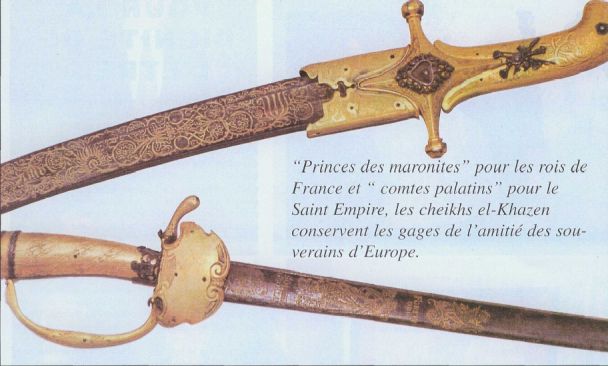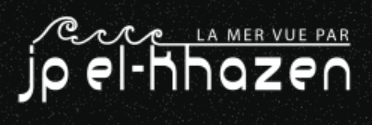by AFP – BEIRUT: An animal rights group in Lebanon is caring for three dehydrated, maggot-infested Siberian tiger cubs that were rescued on their way to a zoo in neighboring war-ravaged Syria. Animals Lebanon said Saturday that its members rescued the cubs earlier this week after they had spent more than a week cooped up […]
by Alex Leary, Times Washington Bureau Chief, Instead of attending a fundraising weekend skiing in Montana, Sen. Marco Rubio, 2016 US presidential candidate is in the Middle East this week for an “oversight” visit. “This weekend, I am in the Middle East on an official visit conducting oversight of U.S. programs abroad as a member […]
AFP, Beirut Friday A Lebanese military court on Friday charged 18 people, most of them Syrians, with transferring more than $19 million from Lebanon to the ISIS, a judicial source said. Fifteen Syrians, one Palestinian and two others were accused of “belonging to Daesh (ISIS), creating a money smuggling network and transferring money out of […]
by sputniknews.com Lebanese women seek greater participation in the country’s political life as high-ranking government officials are discussing the possibility of creating a quota for women in Lebanon’s parliament. Both the president and the prime minister of Lebanon have recently broached the possibility of instituting a quota for women in parliament. Inaya Azzeddin, Lebanon’s State Minister for Administrative Development and […]
by The Daily Star BEIRUT: Billionaire Lebanese businessman Fouad Makhzoumi has been linked to French presidential candidate Francois Fillon, raising questions about a conflict of interest, French media reported. Online investigative and opinion journal Mediapart revealed Tuesday that Makhzoumi is a client of the scandal-hit French right-leaning politician, and the billionaire’s company 2F Conseil signed […]
Embed from Getty Images SourceNaharnet , President Michel Aoun held a closed meeting on Thursday in the Vatican with Pope Francis after which the Pope announced that he plans to visit Lebanon pointing out that he always raises prayers for the country. After the meeting, Aoun said: “Lebanon has a special part in the heart […]
Joseph A. Kechichian, Senior Writer – Gulf News Beirut: Free Patriotic Movement (FPM) chief and Minister of Foreign Affairs Gibran Bassil introduced the 75th version of a new electoral law that, to say the least, appeased some and upset others. In this latest confabulation, Bassil called for electing 64 deputies (out of 128) according to […]

by – hyperallergic.com
Recognition came later in life to Saloua Raouda Choucair, a Lebanese
artist working from Beirut, in relative isolation, throughout the second
half of the 20th century. Her first international debut — several
decades after a number of gallery exhibitions in Paris during the
post-war period — was a major retrospective
held at Tate Modern in 2013, after curators from Tate discovered her
work in a gallery in Lebanon. Choucair was 97 years old at the time.
(She stopped producing art sometime in the 1990s, after five decades of
work.) In the summer of 2016, the recently reopened Sursock Museum in
Beirut celebrated Choucair’s 100th birthday,
and in January 2017, the artist passed away peacefully in her Beirut
home. A number of obituaries highlighting her achievements appeared in
the Western press.
Her life’s work was kept almost intact in her apartment in the
Kantari neighborhood of Beirut, having only rarely been sold. In recent
years, a number of her seldom discussed sculptures — modular structures
formed in calculated, irregular shapes — have found their way to
Western institutions, but as far as reception is concerned, Choucair is
still a rather obscure footnote. Most reviews are confined to some
superficial observations on her paintings, and the sculptures, albeit
mentioned, are nowhere offered any serious treatment.
This situation hardly comes as a surprise. A number of artists,
particularly those from the post-colonial world, who have been
discovered and rediscovered by curators in recent years, have shared the
same fate: discovery followed by institutionalization and then, if not
oblivion, a suspended state. In this state, curators cannot decide
whether the artist should be shown as part of the Western canon, or in
carefully labeled ethnographic boxes such as “Islamic art,” “women
artists,” or “modernism” — the last which is a category that today seems
to cover almost an entire century when applied to art produced outside
of the West.

by dailystar.com.lb
This week promises to be crucial
with regard to Lebanon’s Cabinet’s endorsement of the 2017 draft budget
and the launching of legislative Parliament sessions to debate and
ratify a host of draft laws, including the public sector’s controversial
salary hike bill that has been listed on the agenda. Meanwhile, Foreign
Minister Gebran Bassil has said his Free Patriotic Movement would
unveil a new initiative Monday aimed at breaking the monthslong deadlock
over a new electoral law to replace the disputed 1960 majoritarian
system, amid uncertainty on whether the FPM leader’s latest hybrid vote
proposal would be accepted by all the parties. “Hopefully,
the Cabinet will wrap up its discussions on the draft budget tomorrow
[Monday] and finally endorse the fiscal plan before sending it to
Parliament,” Youth and Sports Minister Mohammad Fneish told The Daily
Star Sunday.
Fneish, one of two Hezbollah ministers in the
Cabinet, said deliberations over the past three weeks have focused on
budget provisions and allocations for each ministry amid demands by some
ministers for increased budgets. Cabinet is set to meet under Prime Minister Saad Hariri at the Grand Serail at 4 p.m. Monday to wind up discussions on the 2017 draft budget and approve the country’s long-awaited fiscal plan for the first time in 12 years. However,
the Cabinet’s deliberations have not touched on the public sector’s
salary scale bill that were examined and approved by joint parliamentary
committees last Thursday. The bill has been referred to Parliament’s
general assembly for final ratification. The committees’ discussions
focused on the cost of the salary scale bill, revenues and proposed
taxes to cover it. Speaker Nabih Berri has called for a
legislative session at 10:30 a.m. Wednesday to discuss and approve a
raft of draft laws and proposals, including the salary scale motion.
The Parliament session on the salary scale bill comes amid escalating protests
by lawmakers, labor unions, banks and private businesses against a
string of taxes proposed by Finance Minister Ali Hasan Khalil to cover
the cost of the bill, estimated at LL1.2 trillion ($800 million). It
also comes amid frustration expressed by some teachers’ unions over
what they viewed as low salary increases proposed in the bill that fell
short of their expectations.



